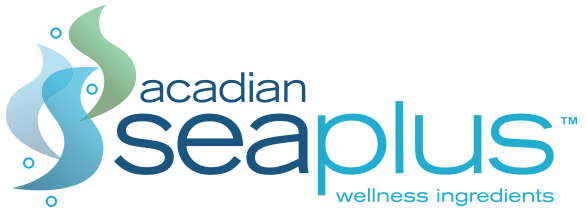These days, antiviral solutions are on everyone’s mind. The general public as well as virologists, healthcare professionals and members of the pharmaceutical industry are eager to inhibit the spread of viruses. Though many researchers are focused on COVID-19 vaccines, there’s also an immediate need on the market for compounds with reliable antiviral activities.
Whether it’s finding new active ingredients to replenish global hand sanitizer shortages or alternatives to traditional virus inhibitors (depleted because of the pandemic) for non-COVID pathogens, researchers are exploring new pharmaceutical opportunities. Here’s what you need to know about seaweed as an antiviral agent.
What Makes Some Compounds from Red Seaweeds Antiviral
In some red seaweeds, the organic compound with the most promising antiviral properties is carrageenan. In the past, we’ve talked about carrageenan as an emulsifier in organic food manufacturing and seaweed skincare products. Trials show that this versatile sulfated polysaccharide suppresses viruses in very promising ways.
For starters, the antiviral properties of carrageenan interfere directly with viral attachment to host cells and the subsequent stages of its replication cycle. While vaccination is the best tool available to prevent viral disease, carrageenan has the potential to help in the fight against enveloped viruses such as influenza, SARS, and HSV. Though more studies still need to be conducted, carrageenan may become a useful tool to help fight viral disease.
What about Brown Seaweed?
There’s more discoveries on the horizon. In June of 2020, research was approved in the UK to explore the antiviral properties of brown seaweed. The James Hutton Institute is partnering with a prominent innovator of antimicrobial technologies to identify whether brown seaweed like Ascophyllum nodosum can be used to create a sustainable antiviral product.
The broad range of existing applications give innovators and formulators encouragement that the organic compounds within brown seaweed can further contribute to the supply chain of antiviral products.
The Application of Carrageenan
With both established uses and promising trials, some researchers have come to the conclusion that there’s great potential for carrageenan as a low-cost, multifaceted antiviral agent.
Take nasal sprays as an example. Major brands are already incorporating carrageenan as an active ingredient for its ability to hamper the spread and replication of cold viruses. When nasal spray is used in the early stages of infection, the antiviral properties of carrageenan help to physically trap the cold virus in the nasal passage before it can spread further.
In cell culture studies, sulfated polysaccharides like carrageenans have even demonstrated effectiveness in the prevention of Herpes simplex Virus. Studies in mice found that topical application of this antiviral agent protected nine out of ten female mice from developing HSV-1 induced lesions, or dying from the disease. For some perspective, mice in the control group only had a 10% survival rate.
Those are just two of the potential applications to work alongside vaccination for disease prevention. As expectations grow for antiviral medications and treatments, pharmaceutical companies that are able to harness an untapped and sustainable resource such as certain red seaweeds will be able to provide relief and protection to innumerable people worldwide. Which active ingredient is your business overlooking?
Many seaweed species contain antiviral properties. Could your products benefit from using it as an antiviral agent? Reach out to our team to discuss further.
